English has become a global communication language to connect people worldwide, bringing multiple opportunities. Parents worry about their children’s English and want to help their language learning journey because language learning will amplify their skills. Home education is the best alternative for your children’s classroom education. Along with encouraging students to learn a new language and its related concepts, it also gives them extra practice to help them become more fluent in writing as well as spoken English. This blog will help parents create a supportive environment for their children to learn English, teach it in a simple and efficient way, and provide information about the English Language Speaking Course.

Why Should You Teach English To Children Early?
Children can learn faster than adults in all areas, like language, but that’s just not fair. If you’re trying to teach your kid English at home, buckle up. You’ll need a whole lot of stamina and patience to do this task. Still, starting young? Total game-changer. They’ll get better at talking, remembering stuff, and who knows, maybe even crush it later in life.
10 Tips To Teach English To Your Children At Home.
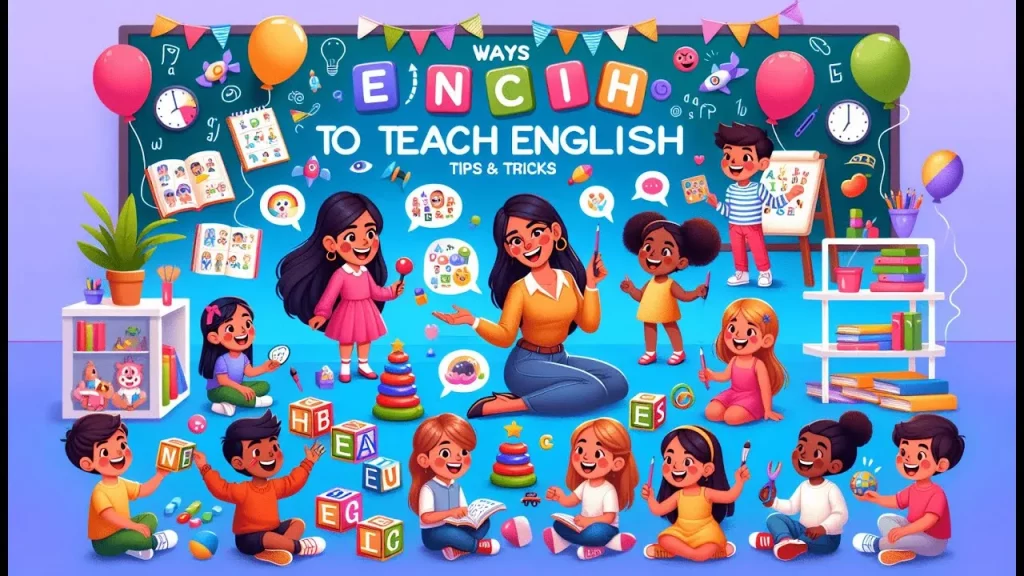
1. Teach English By Encircling Them With The Language
Enclose your house with the language English. This method does not give you the right to prohibit your native mother tongue. Use related English words for the things available at your home as well as in your conversations, which will help them learn the language quickly.
2. Making It Part Of The Daily Talk And Teach English

Having a deep conversation in English with kids at home is a bit difficult. Start with simple statements that you already say at home. “How are you? What are you doing? It’s time to study,” and so on. Do not put your child on the spot to answer immediately. Allow your child to find their own time to process the new words you have said. And once they are done, they will reply with complete confidence.
3. Attractive And Fun Games Help In Teaching English
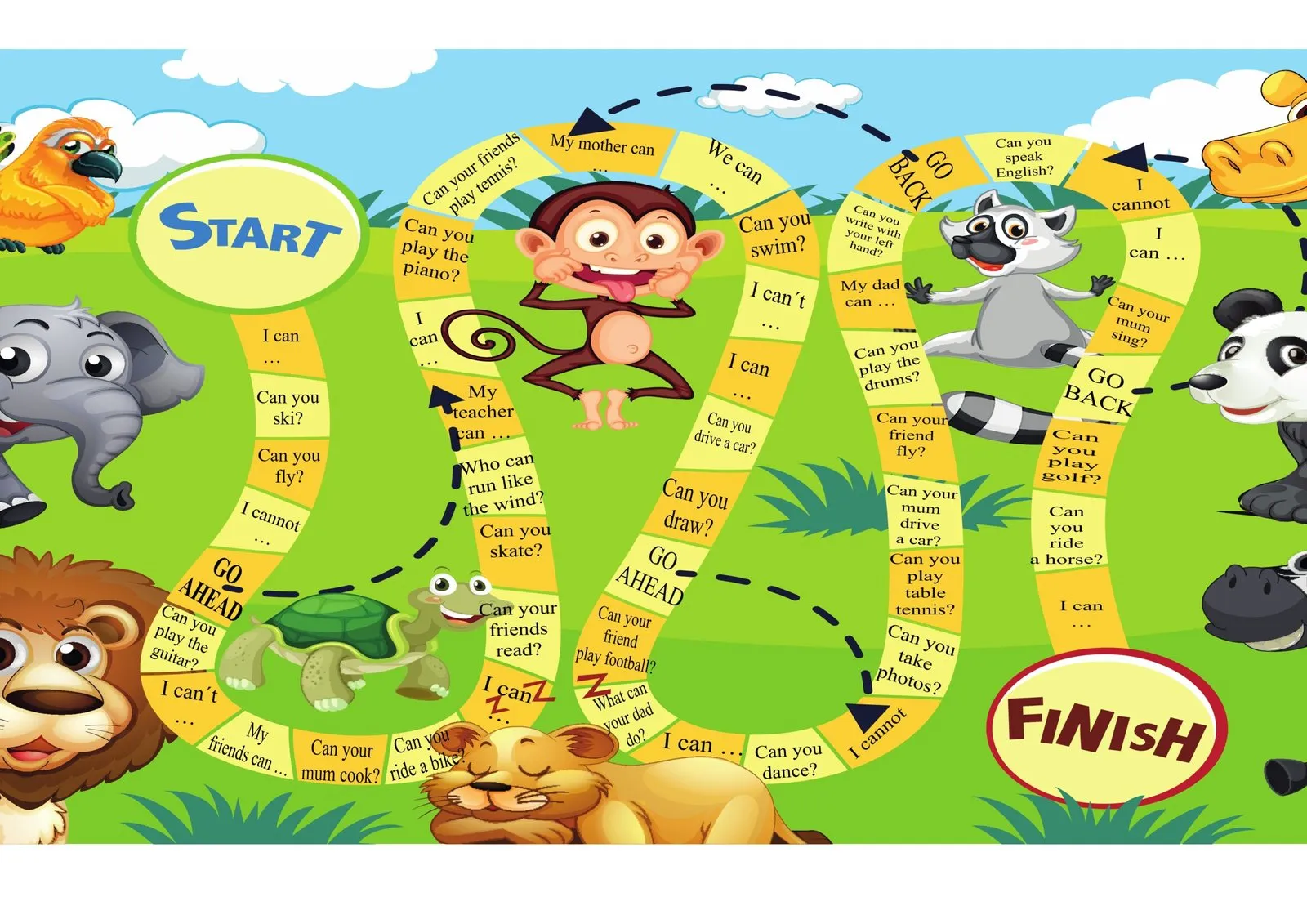
Children get distracted easily if the teaching method is not fun-loving and boring. Anything that gets them moving, laughing, or competing a little will work way better than any boring workbook. Games like “Treasure Hunt,” which involve cards with hidden phrases, and “Memory-Matching” consist of matching words with pictures. “Simon Says” is also an excellent tool for teaching body parts and action words. One of the best alternatives to workbooks is fun and playful games.
4. Teach English Through Storybooks:
Reading storybooks filled with attractive pictures is essential for Learning English, as they enhance their imagination and help them gain information. “The Snail Carpenter, The Little Prince, The Monkey and The Crocodile,” etc., are some great storybooks. Read out the stories for them and ask straightforward questions related to the story, such as “What is this? What will happen next?”
5. Rhymes And Songs Help To Teach English
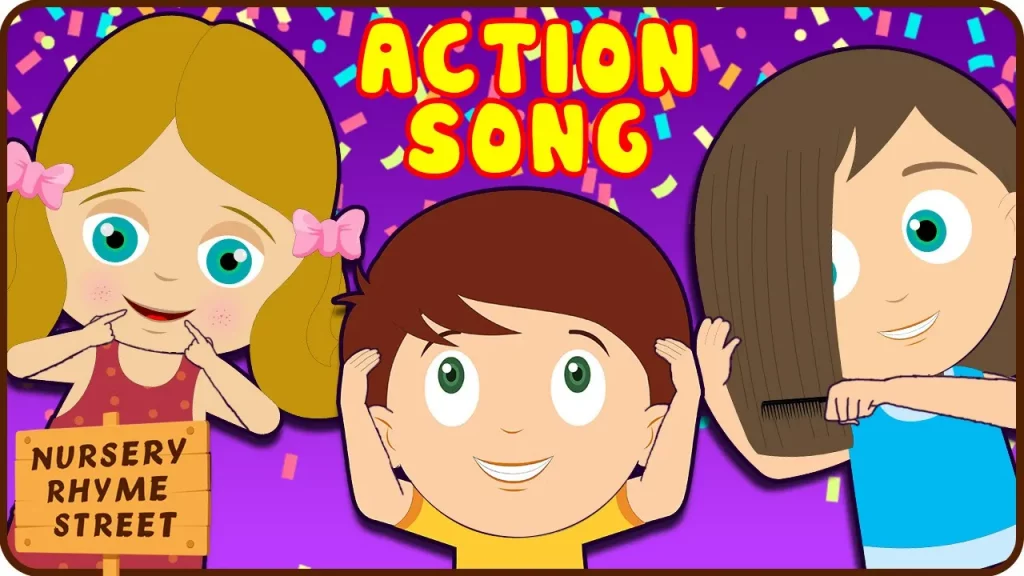
Kids tend to get interested in colourful and catchy visuals. Videos of rhymes on YouTube with subtitles such as “One Two Three Four Five”, “Hop a Little”, “Wheels of the Bus go Round and Round”, and many more will help them learn new words and sentences. Schooling your child with the help of rhymes and songs is the simplest way to ease the difficulty for them regarding the English language.
6. Inspire Tension-Free Speaking To Teach English
This method allows the children to focus on refining their speaking skills. Ask brief answer questions rather than one-word questions, such as “What are you doing? ” and “What did you see there?” and respond to them so that they can mimic your words, for example. “I am hungry, etc.” Focus on communication and appreciate them for their attempts rather than correcting their grammar. It’s normal for children to listen first rather than speak when learning English at home. Their spoken English is usually followed by understanding and confidence.
7. Teach English Through Building Their Vocabulary And Grammar
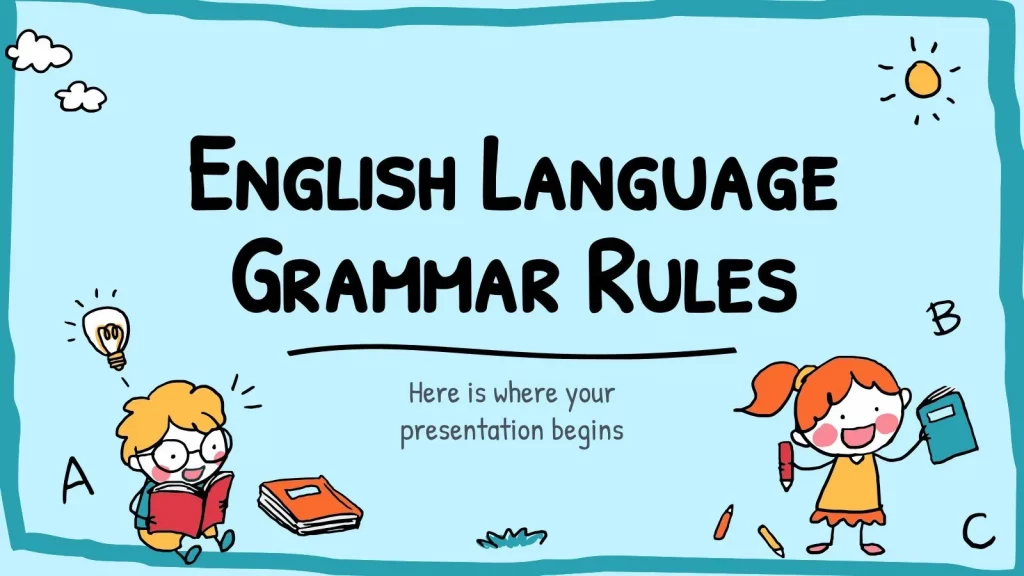
You need to insert new words where you can to help the kids speak English like little experts. You can talk about pizza, rubber boots, dinosaurs, or whatever else is of interest to them. Just show them an image of a banana, state the word, and take a memorable edge. Make the assignments less boring by just alternating letters or sounds. Assign them simple essay writing and cover the grammar, structure, and usage in more detail.
8. Teach English With The Help Of Technology
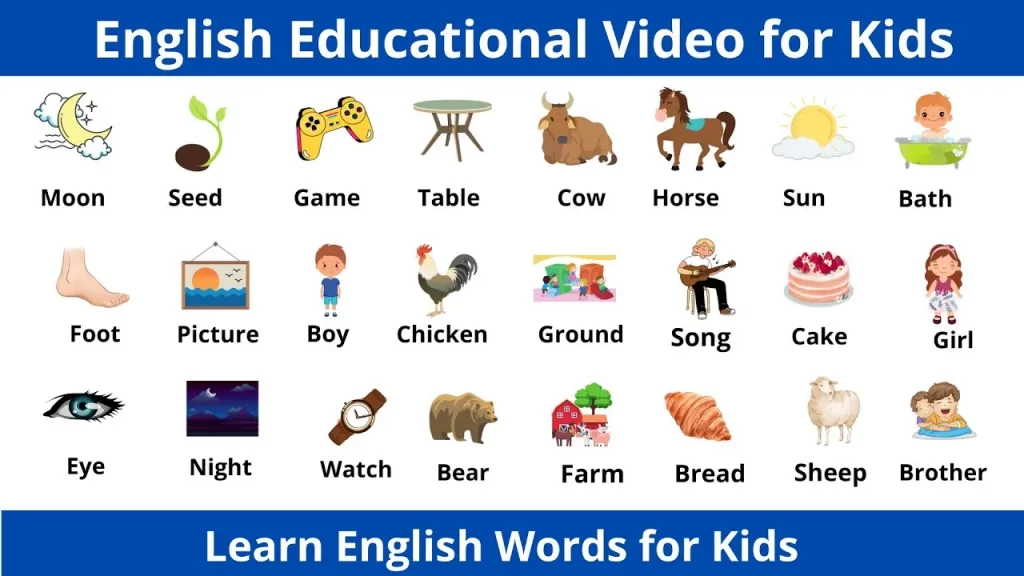
Technology can be a great source of language guidance for children. You should make your kids watch videos related to the English language on different YouTube channels. Henceforth, parents should engage with their kids in the process and ask them questions. Nothing can keep kids engaged more than attractive and colourful visuals.
9. Teach English Real-World Connections In Teaching English
Children learn anything, including language, much faster when it is connected to the things around them. Take them for a walk, point out the things on their way here and there, and introduce them to words related to the things around. Including English words in their daily lives related to their surroundings and unforgettable days is one of the most efficient ways to teach your child.
10: Teach English By Example
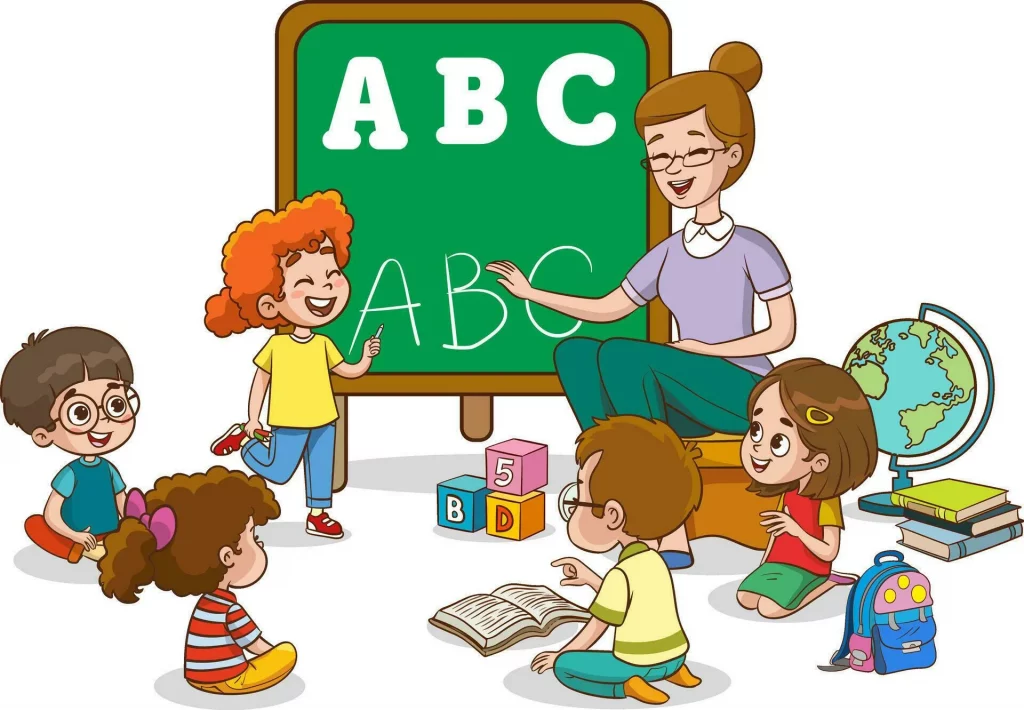
Speak English with your child instead of speaking your mother tongue to your children, speak to them in English using short sentences to show others around you that you are setting an example. Praise their little successes, like gaining knowledge of a word or phrase. You can also get things wrong, but don’t panic about it; believe that your confidence will be the takeaway of your ability to learn from your mistakes. Your kids will most likely speak English with interest and effort if you do the same.
Challenges and Their Solutions Faced During Teaching English to Children at Home
One of the common problems is that children tend to lose interest quickly. But it can be simple, with fun activities, humorous pictures in books, videos, and much more. Primarily, while your child is learning, he will answer you back in his mother tongue, and that’s very normal, just chill out and keep the conversation in English flowing. Kids pick up on vibes way more than grammatical words. Another common problem is that children lose interest quickly. In those instances, consider changing or varying the activity, making your lessons shorter, and, more importantly, designing your material around your child’s interests to capture their attention.
Henry Harvin English Language Course

If you are looking for English speaking classes near me, then the Henry Harvin English Course is best designed for your needs. This course will help you develop your English communication as well as reading and writing skills. Therefore, it will give you the confidence to speak in personal, social, and professional places.
- Online classes and communication practice with native speakers for 90 hours.
- AGOTA Framework includes recognition by Economic Times, AAEFL, UKAF, ISO 29990, and MSME
- Internships and project work, including essay writing, and grammar exercises.
- More than 3 sessions of Masterclasses in soft skills development are provided.
- Certification from a Government-recognized organization and NSDC validation, with internship as well as job placement.
Conclusion
It is not that difficult to teach English to your child at home. Learning the English Language can be fun and playful rather than boring and challenging. This requires support with sufficient resources, a little time, and lots of patience. The best advantages of homeschooling your child are that you can decide their learning at your own pace and the lessons. It is you we want to engage and motivate! Create a fun and relaxing environment for them in which they can explore English in every way they like. Use stories, games, songs, and anything else interactive that you enjoy. Be patient and let it work!
Recommended Reads
- How English Language Classes Can Boost Your Career Opportunities
- How to Learn English Speaking at Home?
- Why is Grammar Important? Learn These 4 Essential Rules
- Top 25 English Writing Skills in 2025
- The Difference between Transcription and Translation in Language
- How to Earn a Certificate in Online Teaching and Learning?
FAQs
Ans: Indeed, you can teach your child English language through conversation, reading storybooks, or watching rhymes.
Ans: No, keep talking to them in your native tongue, because teaching something new doesn’t mean replacing the older one. It’s learned best when it’s done naturally.
Ans: Definitely, you can. First, introduce the English alphabet, and then simple words and rhymes, both from books and YouTube.
Ans: Just start whenever your child is ready and shows interest in learning. There’s no particular time or age to begin teaching them spoken English.
Ans: Keep the teaching fun and short for around 20 to 30 minutes every day to effectively hold your child’s attention.
